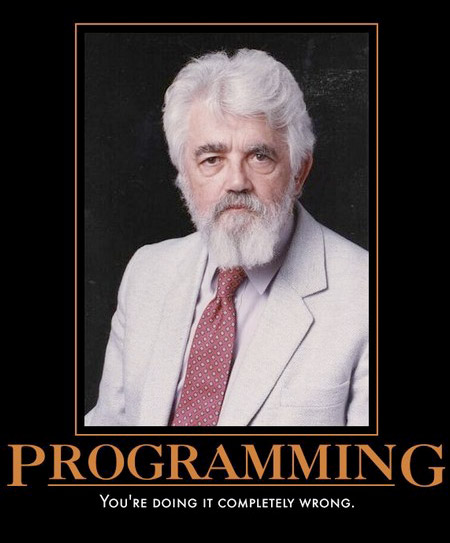 Most of the truly successful marketers have three competitive advantages :
Most of the truly successful marketers have three competitive advantages :- They run successful Affiliate Programs (Part 1)
- They own large Opt-In Lists and have large traffic (Part 2)
- They create their own products (Part 3)
- Opportunity 1 - Using Own Products and Services Combining your own products with a successful Affiliate Program is almost a license to write your own checks.
- Opportunity 2 - Using Resell and Master Rights Products Surprisingly, as you will see in step 4, you can create and run an Affiliate Program even if you don't have your own products and services.
- Opportunity 3 - Substitute Joint Ventures All successful Affiliate Programs are joint ventures in miniature. Your affiliate partners require as much of your support and commitment as would any JV partners.
- It delivers consistent sales for Affiliates, by marketing products with high consumer benefits.
- It operates on a Leveraged I'ncome Pay structure, which extends a number of levels deep.
- It operates on a Residual I'ncome Pay structure giving Affiliates repeat I'ncome.
- A good program has high quality marketing tools and incentives for the Affiliates.
- It pays out big percentages of the sale to the Affiliates and it pays promptly
- The administration function tracks and corrects affiliate issues quickly, and effectively.
- A good program trains and supports Affiliates enthusiastically.
- It offers Affiliates complimentary, high value, front and back end products for promotion.
- It handles all end customer care issues. 10) A good program constantly tests new ideas to support and strengthen ties with affiliates and end customers alike.
 |
| Add caption |
Most people join an Affiliate Program on the strength and reliability of its compensation plan.
* Compensation Structure Planning :
- Who can join the program Is it open to anyone or just selected, approved partners ?
- Downline matrix structure for Leveraged I'ncome How deep is the matrix of downline earnings for Leveraged I'ncome ?
- Residual I'ncome Payments Does the program pay Residual I'ncome, on repeat subscriptions for as long as the end customer renews ?
- Minimum Payment amounts, and deadlines. Policy on payments, returns and deductions from Affiliate payments must be clear from the beginning.
- Affiliate monitoring of the program Affiliates must be able to easily monitor referrals and earnings. Clear and accurate reports to Affiliates should be available online or sent by e-mail.
Develop high quality graphical links that Affiliates can use on their own websites to point to your program. These include
- Web Templates and copy
- Banner Links
- Button Links
- Text Links
Do not make the mistake of thinking that when they sign up the whole thing will run on autopilot.
* Legal Issues
Consult professional, qualified lawyers to help you draw up your program terms and conditions before you go to market. The upfront cost involved may save you greater expense in the future.
Step #4 - Resell and Master Rights Product Affiliate Programs
An Affiliate Program without your own products is possible, but use caution - it is less likely to be a huge earner, than one promoting your own stable of products.
Why would anyone join an Affiliate Program to promote a resell or master rights product, that they could buy and sell earning 100% of the profits ?
The answer is reduced effort, time and money.
An Affiliate Program for resell or master rights products saves the affiliate from having to buy, process, add value to and give customer service to the resell rights product.
It becomes an easy I'ncome stream that people may want to join.
The trick in this situation is to
- Spot a product with selling potential, that is relatively scarce and has not been over marketed.
- Create the Affiliate Program where the product owner has failed or is incapable of seeing the market opportunity.
Step #5 - Mini Joint Venture
JV partners bring "something with them, to the party" - This might be funding, a huge opt-in list, a product or service, or ideas.
Affiliate partners on the other hand, bring only their desire to promote your products and services.
However, the practical day to day administration of the two types of programs is very similar.
For instance:
- You should coach affiliates and JV partners in the best way to market the products.
- You must listen to their issues and deal with them effectively and efficiently
- You must make sure they are happy with the program arrangements, in order that they promote it strongly and join up for future promotions.
Step #6 - Affiliate Program Automation
Quality tools are indispensable for Affiliate Program Automation
- Affiliate Scripts - These are commercially available scripts that allow you to set up programs of various complexity in terms of compensation plans, account management, and program administration.
- Administration Tools - These allow you to see in detail which Affiliates are performing and deserving of more of your effort, time and attention and which ones are not and can therefore be dropped from the program.
- Sequential Autoresponder - Use this to coach and train your Affiliates by sending them regular e-mail.
- VoIP Communicators - These allow you to hold Cheap Live training and support seminars where your Affiliates can virtually attend, see, hear and talk to one another from across the Globe without the need for expensive travel or phone costs.
- Payment Processor - This is the facility by which your Affiliate partners will be paid.
- Product Fulfillment - A successful program will generate many sales and the fulfillment process must be able to cater for the heavy workload.
- Customer Care - The extra sales means that you may need to handle higher levels of end customer issues including returns.

